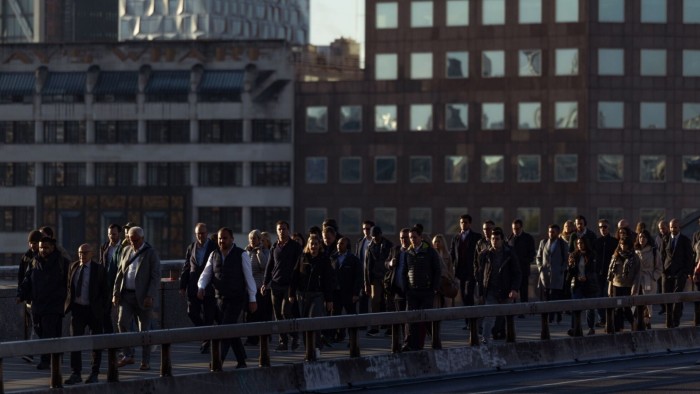Labour markets in many leading economies are freezing up as uncertainty over trade, tax and artificial intelligence causes employers to put off hiring and firing and employees to stick with their jobs.
Employment grew at an annualised rate of just 0.5 per cent in the US and 0.4 per cent across the rest of the G7 economies in the three months to July, according to official data. That is well below the rates seen in 2024.
Instead of cutting staff, companies appear to be largely maintaining their workforces, while slowing hiring at a time when AI threatens to reshape labour markets and US President Donald Trump’s trade war risks hitting global growth.
Employment growth is “one of the main weak spots in advanced economies”, according to Simon MacAdam, deputy chief economist at the consultancy Capital Economics.
In the US, jobs growth almost stalled over the summer, with the world’s largest economy even shedding positions in June.
With the exception of Japan, employment growth has been slowing across other G7 economies for several years, in particular in the UK, where payroll employment has fallen about 0.5 per cent over the past year.
“You’re in a low-hire, low-fire economy,” said Federal Reserve chair Jay Powell last month. He added that the US economy was in a period of massive change and companies wanted to see “how it all shakes out”.
Alongside employers putting off hiring and firing, recruiters say candidates are nervous of moving.
James Hilton, chief financial officer at the UK recruitment group Hays, said a slump in its main markets reflects caution on the part of employers, but also candidates’ worries that they will lose the hybrid work arrangements secured in the post-Covid upswing if they change jobs.
“Companies are taking longer to hire and offering smaller pay rises, while candidates are worried about job security, losing flexible work, or facing longer commutes,” he said.
A static labour market is especially difficult for young people trying to start a career, but despite the freeze, there is little sign of widespread job losses.
Unemployment remains at record lows in much of the Eurozone and has risen only modestly in the US, UK and Germany. Even in these countries, some employers report persistent labour shortages.
Central bankers are struggling to tell whether jobs markets are becalmed because of weak demand or changes that affect the labour supply, including the age and health of the workforce, swings in immigration policy and shifting lifestyle preferences.
In the US, Christopher Waller and Michelle Bowman, two Fed governors who called for rate cuts earlier than others, think there is evidence of a substantial weakening. “I am concerned that the labour market could enter into a precarious phase, and there is a risk that a shock could tip it into a sudden and significant deterioration,” said Bowman last week.
But Austan Goolsbee, president of the Chicago Fed, has cautioned that low payroll gains are not necessarily a warning sign for the central bank. With unemployment still low at 4.3 per cent it could reflect Trump’s immigration crackdown and a wave of baby boomers retiring, rather than weaker demand, Goolsbee said.
Data tracked by LinkedIn, the professional social network, paints a consistent picture of low churn in the jobs markets of many advanced economies. The share of members who have recently added a new employer to their profile is about a fifth below its pre-pandemic rate in the US, UK, Canada and Australia. It is even lower in France, and down almost 15 per cent in Germany.
Kory Kantenga, LinkedIn’s head of economics for the Americas, said many countries were still suffering “aftershocks from the pandemic”, which unleashed a hiring frenzy followed by a pullback as central banks raised interest rates in response to surging inflation.
In most countries, the labour market is still “normalising” rather than “presaging a broader downturn in the economy”, MacAdam said. He also pointed to a series of country-specific issues — tax pressures in the UK, political stasis in France, the structural challenges afflicting German industry and the effects of tariffs on US distribution and manufacturing.
Recommended
Stefano Scarpetta, director of the OECD’s employment, labour and social affairs directorate, said it was striking that employment rates remained high, and labour shortages widespread, despite a long period of relatively slow growth and high uncertainty.
One big reason fewer people were moving jobs was demographic, he said.
“We know that older workers are less mobile . . . they are more settled, less keen to move geographically, they may find it difficult to negotiate higher pay in a new job if they have experience but not formal education,” he said.
“All European countries are ageing, and mobility is influenced by ageing.”
Data visualisation by Amy Borrett and Keith Fray


